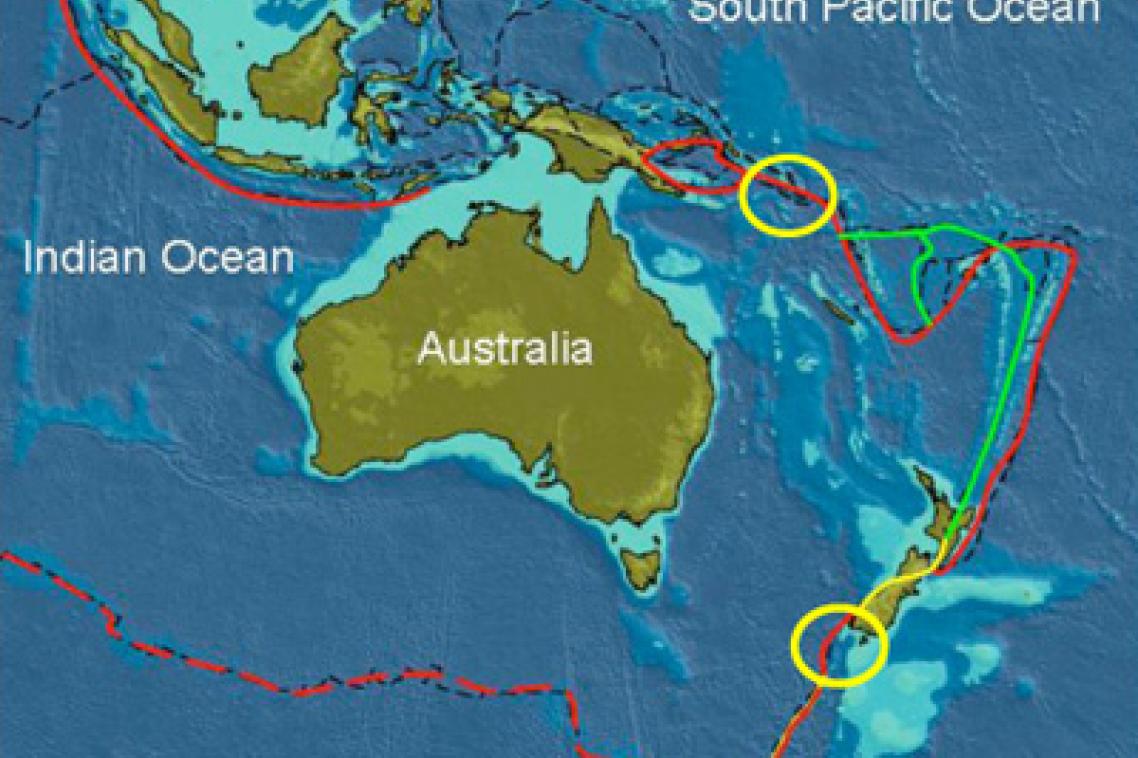Australian continent to blame for Samoa, Sumatra quakes

The recent earthquakes in the Pacific and Indonesia have one University of Queensland researcher questioning whether the two are related.
Dr Huilin Xing from UQ’s Earth Systems Science Computational Centre (ESSCC) said the motion of the Australian tectonic plate probably caused one of the quakes, then the other.
The two quakes, measuring 8.0 and 7.6 on the Richter scale, occurred off the coasts of Samoa and Sumatra on September 29 and 30.
“From the observations, there were similar correlations of the quakes in the different places,” Dr Xing said.
“For two great earthquakes to occur within hours in such a way, it is abnormal.”
Dr Xing said since the start of 2004 there had been about 40 earthquakes measuring greater or equal to 7.0 on the Richter scale, along the boundary of the Australian plate.
These earthquakes have resulted in almost 240,000 fatalities, with the most devastating accounting for 228,000 after a resulting tsunami on Boxing Day 2004.
“From research, we can expect that if an earthquake is larger than magnitude 6.5 there may be a tsunami,” Dr Xing said.
In the wake of the 2004 Boxing Day tsunami, Dr Xing’s team started to study the Sumatra region as a high-risk zone for seismic and tsunami activity.
Using advanced computer simulation software, which had been developed by Dr Xing’s team over the past seven years, they predicted three large Sumatran earthquakes.
Dr Xing said in the light of so much activity occurring at the edge of Australian plate, Australia was also under threat from earthquakes and tsunamis.
“Australia is mostly surrounded by subduction zones,” he said.
These zones are notorious for subduction earthquakes where one plate moves under another, pushing it and all of the water above it up. Such an earthquake was responsible for the 2004 tsunami.
“If a large subduction earthquake occurred in the deep water regions such as south of New Zealand or west of the Solomon Islands, it would impact the eastern coast of Australia.”
He said a shallow earthquake generated the Samoan tsunami, where the Australian plate and the Pacific plate convergence relatively with each other, causing four to six metre waves.
The ESSCC conducts research on the mechanics and physics of solid Earth processes on all scales using supercomputer simulation and by applying the methodologies of geophysical fluid and solid mechanics.
Media: Dr Huilin Xing (07 3346 4093 or xing@esscc.eu.edu.au) or Robert Mitchell (073346 7086 or r.mitchell1@uq.edu.au).
Images: Contact Karen Poole 07 3365 2753
Related articles
Human trial finds ultrasound treatment for dementia is safe

How can parents talk to their kids about the Bondi terror attack?
Media contact
UQ Communications
communications@uq.edu.au
+61 429 056 139
